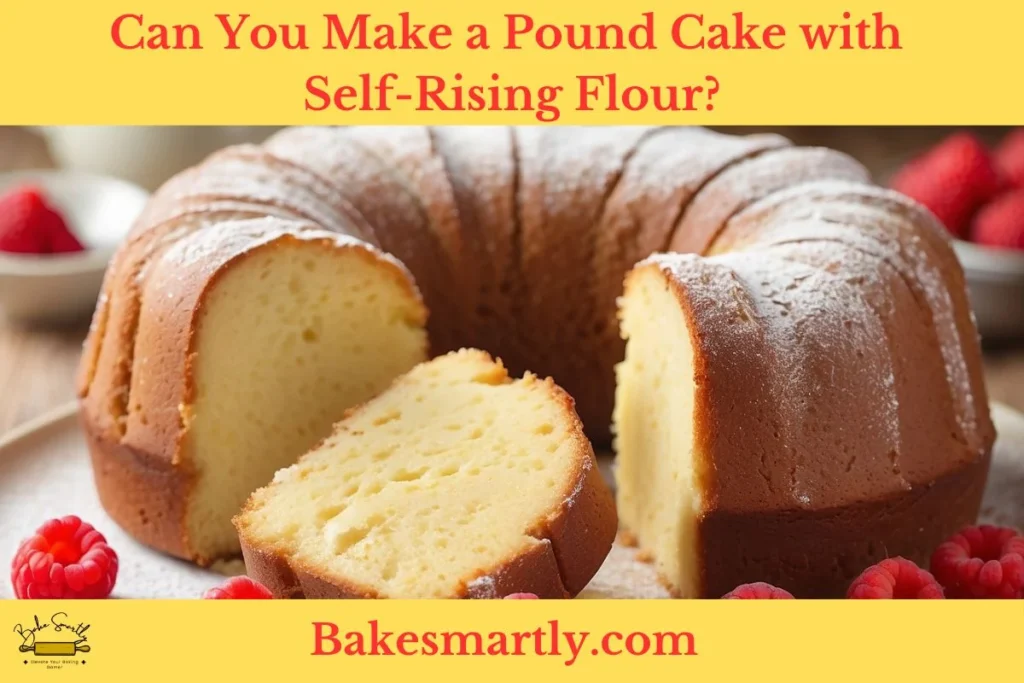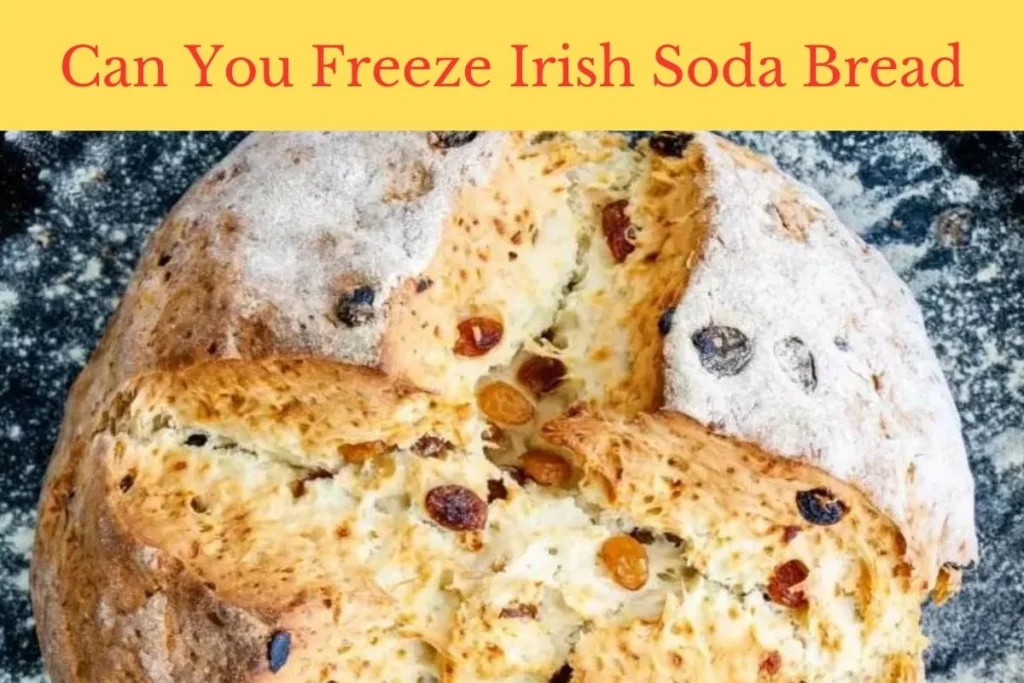
Can You Freeze Sponge Cake with Buttercream Frosting
Picture yourself with the delightful taste of a freshly baked sponge cake topped with luscious buttercream frosting right at your fingertips, ready for any occasion. The secret? It’s all about the magic of freezing.
In this article, I’ll guide you through the process of freezing sponge cake with buttercream frosting, sharing why it’s a game-changer and offering you a step-by-step guide for achieving optimal results.
Table of Contents
ToggleCan I Freeze a Sponge Cake with Buttercream?
YES, You can freeze a sponge cake with buttercream, but there’s a trick to it. While the cake usually handles freezing well, the buttercream frosting might change texture when it gets cold. The freezing process can make the butter in the frosting harden, messing with its smoothness.
For a successful freeze, here’s what you should do. Ensure the cake is at room temperature before wrapping it up well to keep the moisture in. Think about freezing the buttercream on its own to keep it just right. When it’s time to thaw, take it slow in the fridge to keep the cake moist and avoid any condensation issues.
How to Properly Freeze a Sponge Cake with Buttercream Frosting
Freezing a sponge cake with buttercream frosting requires a careful approach to keep its texture, flavor, and overall quality intact. Whether you’re a seasoned baker planning ahead or just trying to save a special cake, follow these steps to make sure your sponge cake stays delicious after freezing.
First, let the cake cool completely before freezing. This is important to maintain the cake’s structure and prevent condensation during freezing. Once cooled, wrap the cake tightly in several layers of plastic wrap, making sure every part is covered to avoid freezer burn and unwanted odors.
After wrapping it in plastic, add an extra layer of protection by placing it in a freezer-safe, airtight container. This not only protects against freezer burn but also helps keep the cake moist. Label the container with the freezing date to track freshness.
If you’ve frosted the cake, freezing it needs some finesse. To prevent the frosting from getting too firm, consider flash-freezing the unwrapped cake for 1-2 hours. Once the frosting has slightly solidified, wrap and containerize as before.
If you’ve frozen the cake without frosting and plan to add it later, wait until the cake is completely thawed before applying the buttercream. This ensures the frosting sticks properly and stays smooth.
Remember, freezing can extend a cake’s shelf life, but it’s not a magic fix. For the best results, consume the frozen cake within three months. After that, the risk of freezer burn and flavor changes increases.
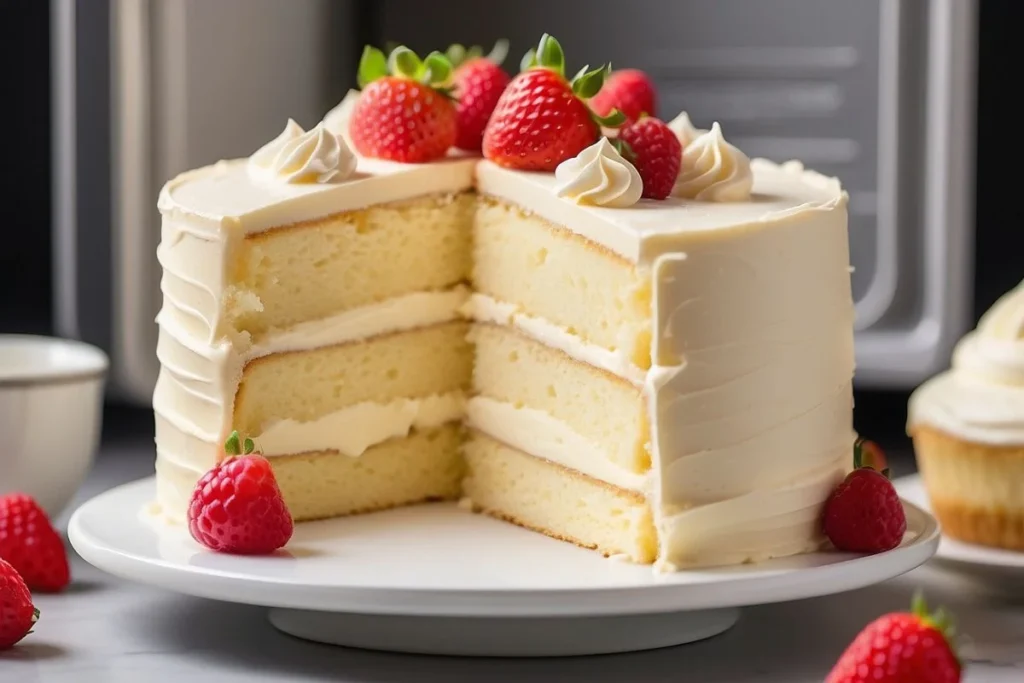
How Do You Defrost a Sponge Cake with Buttercream Frosting?
Defrosting a sponge cake with buttercream frosting is a crucial step to ensure that the cake retains its moistness, flavor, and overall deliciousness. Here’s a comprehensive guide on how to defrost your frozen masterpiece:
Thawing Methods:
- Refrigerator Thawing: To maintain the integrity of your sponge cake, the refrigerator is your best ally. Place the frozen cake on a plate or in a container to catch any condensation. Allow it to thaw in the refrigerator overnight. The gradual thawing process ensures that the cake stays moist without compromising its texture.
- Room Temperature Thawing: If you’re short on time, you can opt for the room temperature thawing method. Place the sealed cake on the countertop and let it thaw for a few hours. Ensure the room isn’t too warm to prevent the buttercream from melting. This method is quicker than refrigerator thawing but requires careful monitoring.
- Microwave Thawing: For those moments when you need a slice of cake ASAP, the microwave comes in handy. Use the defrost setting in short intervals, checking the cake’s progress regularly. Be cautious not to overdo it, as microwaving can lead to uneven thawing and compromise the cake’s texture.
Preventative Measures:
- Avoiding Condensation: As the cake thaws, condensation can form on its surface. To prevent this, keep the cake wrapped in its original covering or use plastic wrap. This protective layer helps maintain the cake’s moisture without allowing excess water to seep in.
- Patience is Key: Regardless of the thawing method chosen, patience is crucial. Rushing the process can lead to uneven thawing, potentially affecting the texture of the buttercream. Allow the cake to thaw gradually, ensuring each layer reaches room temperature consistently.
Final Touches:
Once the cake has thawed completely, resist the urge to slice into it immediately. Give it a little extra time to adjust to room temperature fully. If any condensation has formed, gently pat the cake with a paper towel before serving.
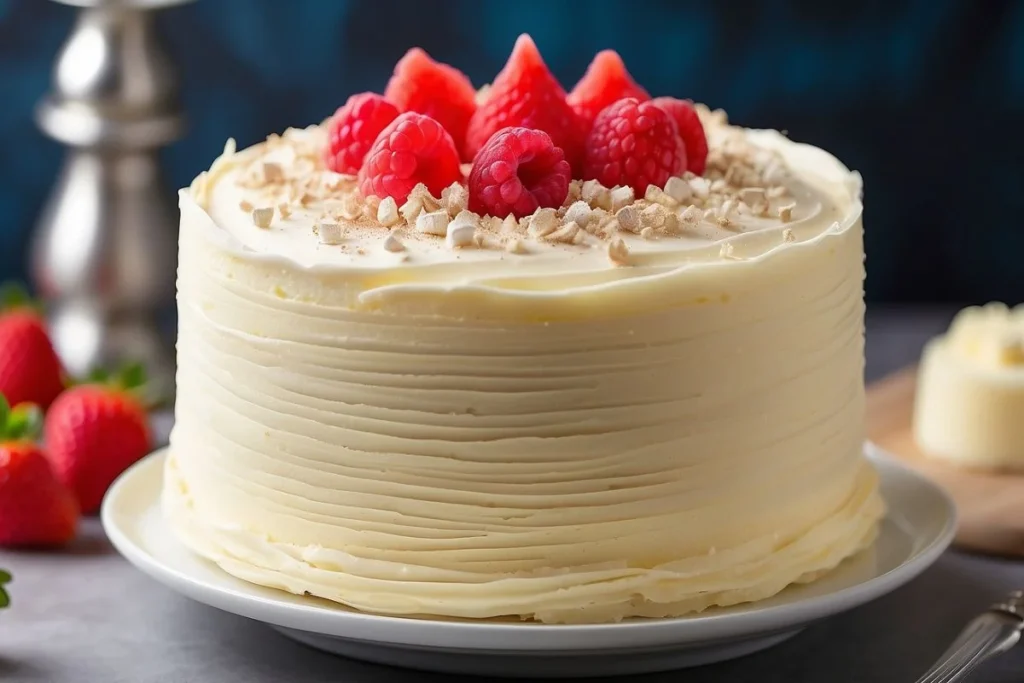
4 Common Mistakes to Avoid When Freezing a Sponge Cake
When it comes to freezing a sponge cake, making a mistake in the process can mess up the final result. Let’s go over four common errors to avoid so that your frozen creation stays moist and tasty.
Freezing a Warm Cake
A big goof people often make is freezing the cake when it’s still warm. I get it, time can be tight, and waiting feels tough. But here’s the deal: freezing a warm sponge cake locks in steam, making the cake too moist.
As it freezes, that trapped steam turns into ice crystals, messing with the texture and sponginess. To dodge this, be patient and let your cake cool completely before freezing.
Wrapping Woes
How you wrap your sponge cake is a big deal. A common slip-up is using the wrong wrapping materials. For the best outcome, use plastic wrap or aluminum foil to seal the cake tightly.
This keeps air out and lowers the chance of freezer burn. If you don’t wrap it up right, you might lose moisture, and your cake could soak up weird smells from the freezer.
Forgetting to Label and Date
Staying organized is key in the freezing game. Forgetting to label and date your frozen sponge cake can lead to mix-ups and letdowns. Frozen stuff starts looking alike over time, and without labels, figuring out when you froze your cake and what’s in it can be a puzzle.
Keep it simple: label your wrapped cake with the freeze date. That way, you’ll know how long it’s been stored, and you can savor it when it’s still at its best.
Microwaving Mishaps
Microwaving might be quick for many things, but thawing a sponge cake this way is a slip-up. It can thaw unevenly, creating hot spots and possibly wrecking the delicate cake structure.
Instead, go for a slow thaw in the fridge or at room temperature. This method lets the cake thaw evenly, keeping its texture intact and preventing any weird flavor changes.

Alternative Cake Frostings for Freezing
When it comes to freezing cakes, the type of frosting you choose is crucial for a successful process. While buttercream is a classic favorite known for its creamy texture and versatility, other frostings work just as well in the freeze-thaw cycle.
Let’s check out these alternatives to add some variety to your frozen cake creations.
- Cream Cheese Frosting: Cream cheese frosting, with its tangy and rich flavor, surprisingly does well in the freezer. Just make sure your cake is well-wrapped to prevent it from drying out, and you’ll see that the cream cheese frosting keeps its smooth consistency when thawed.
- Whipped Ganache: Ganache, a decadent mix of chocolate and cream, can be whipped to a light and fluffy texture. This frosting not only adds a luxurious touch to your cake but also holds up well in the freezer. The key is to wrap and seal it properly to maintain the ganache’s silky texture.
- Swiss Meringue Buttercream: Swiss meringue buttercream is a lighter and less sweet alternative to traditional buttercream. Its stable composition makes it suitable for freezing, and it keeps a silky texture after thawing. Just be sure to protect your cake well to avoid any unwanted flavors.
- Fondant: While fondant is commonly used for cake decorations, it can also be a good frosting option for freezing. The smooth, sugar-based coating acts as a protective barrier, preserving the cake’s moisture and flavor. Apply the fondant evenly, covering the entire cake for the best results.
- Chocolate Avocado Frosting: For a healthier twist, try chocolate avocado frosting. Avocado adds a creamy texture without compromising on taste. This alternative is not only freezer-friendly but also introduces a unique flavor to your frozen cake.
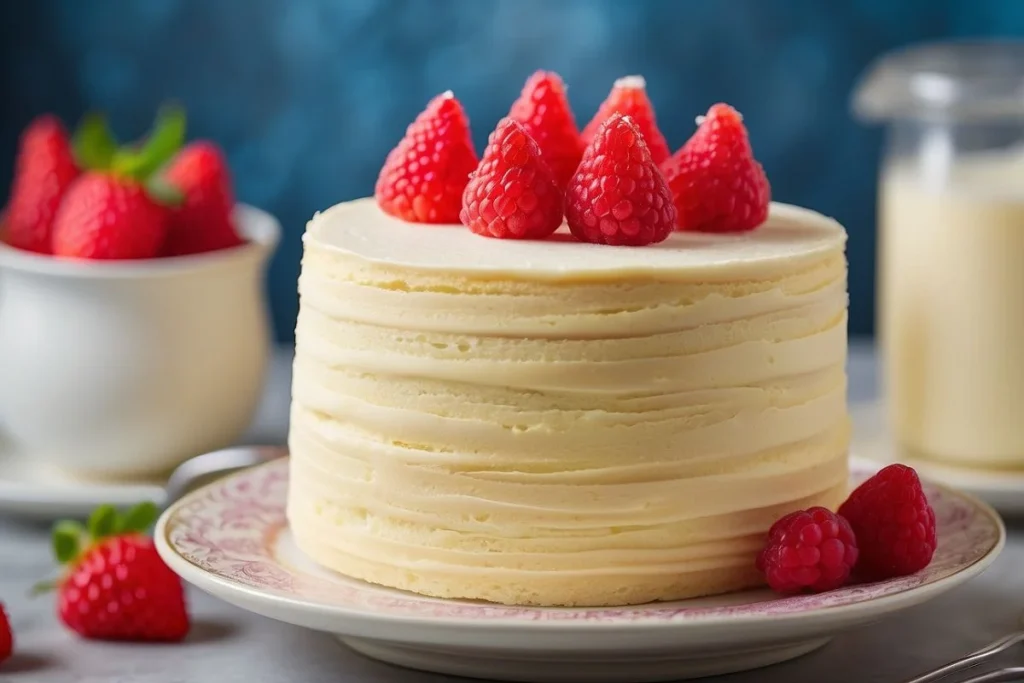
How Long Does Sponge Cake with Buttercream Last in the Fridge?
Curious how long your sponge cake with buttercream will stay good in the fridge? Well, it depends on a few things. Generally, if you store it right, a sponge cake with buttercream can hang in there in the fridge for about 3-4 days.
The trick is to cover it well to avoid picking up any funky smells and to keep it nice and moist. I recommend popping it in an airtight container or wrapping it up snugly with plastic wrap. Also, try to keep it on a flat surface to help it keep its shape.
Just keep in mind that even though putting it in the fridge makes it last longer, the taste and texture might not be as awesome after a while. For an even longer shelf life, freezing is the way to go. If you freeze it properly, a sponge cake with buttercream can stay top-notch for up to three months.
Frequently Asked Questions (FAQS)
How long to thaw a frozen cake before frosting?
Thawing time varies, but generally, overnight in the refrigerator works well. For a quicker option, a few hours at room temperature is sufficient. Ensure it’s fully thawed to prevent condensation, which can affect frosting adherence.
Can you freeze cake in Tupperware?
Yes, Tupperware or airtight containers are suitable for freezing cake. Ensure the container is freezer-safe and wrap the cake well to prevent freezer burn. Label with the date for easy tracking.
How to freeze cake without plastic wrap?
Opt for alternatives like parchment paper or aluminum foil. Wrap the cake tightly to minimize air exposure. Place it in a sealed container to maintain freshness. Remember to label it with the freezing date.
Final Thoughts
In conclusion, getting the hang of freezing sponge cake with buttercream frosting opens up a bunch of possibilities for easy and tasty treats. Although freezing takes some careful attention, from wrapping it up right to thawing it carefully, the results are worth it.
Just be sure to steer clear of common mistakes like freezing a warm cake, using the wrong wrapping materials, and forgetting to label and date your creations. Mix it up with different frostings for some variety, and know that with the right techniques, your frozen masterpiece can stay moist and flavorful for up to three months.
So, dive into this freezing adventure and enjoy the wonderful magic of a perfectly preserved sponge cake anytime, anywhere.
Lindsey Mackenzie
About me
Hi there! I’m Lindsey Mackenzie, the founder of Bake Smartly. Baking has been my passion since childhood, growing up in my father’s bakery. With Bake Smartly, I’m excited to share my love for all things sweet and savory. Join me on this delicious journey as we whip up scrumptious treats and sprinkle joy into every bite!


